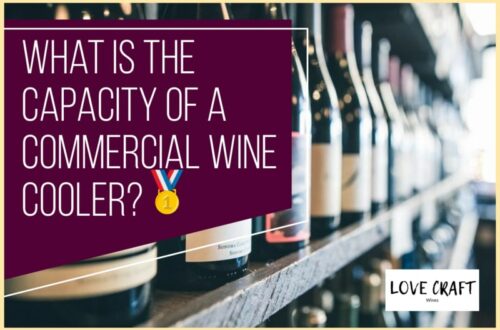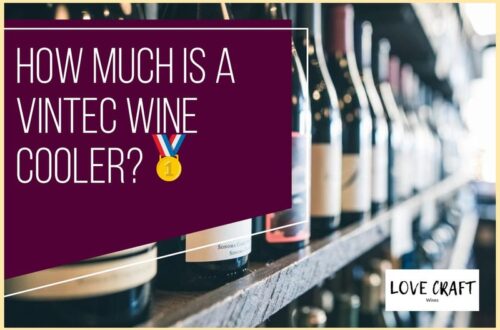When it comes to enjoying a glass of wine, it’s important to know the standard amount that should be poured into a glass. Not only does this help you pace your consumption, but it also allows you to fully appreciate the taste and aroma of the wine.
However, the standard serving size can be affected by several factors that you should be aware of. One of the main factors that can affect wine serving size is the type and style of wine. Different wines have varying alcohol content, flavor profiles, and serving recommendations.
Additionally, the size and shape of the glass can also play a role in determining the amount of wine that should be poured. By understanding these factors, you can make informed choices about your wine consumption and fully enjoy the experience.
Table of Contents
Factors Affecting Wine Serving Size
Now, you’re probably wondering what determines how much of that delicious nectar you get to enjoy in your favorite stemware. Well, it all boils down to a few key factors, so let’s dive in!
First and foremost, wine culture and cultural variations play a significant role in determining wine serving sizes. For instance, in Europe, wine is often served in smaller portions compared to America, where generous pours are the norm. Also, the type of wine being served can affect the amount poured. For example, a fortified wine like Port or Sherry would be served in smaller quantities, while a lighter wine like Pinot Grigio may be served in larger amounts.
Another factor that can affect wine serving size is the occasion. For formal events, wine is traditionally served in smaller portions, while more casual settings may see larger pours. Additionally, the price point of the wine may also play a role in the amount served. Higher-priced wines may be served in smaller amounts to encourage savoring and appreciation of the flavors.
Overall, cultural norms, wine type, occasion, and price point all play important roles in determining the standard amount of wine served.
Now, let’s move on to the role of glass size and shape in determining wine serving size.
The Role of Glass Size and Shape
Choosing the right glass size and shape can enhance your drinking experience and bring out the unique flavors and aromas of your favorite vino.
There are a variety of glassware options available, each designed to optimize the drinking experience for a specific type of wine.
For example, a red wine glass typically has a larger bowl to allow for more air exposure, which helps to release the wine’s complex aromas.
On the other hand, a white wine glass is typically smaller and more narrow, helping to maintain a cooler temperature for the wine.
When it comes to serving etiquette, it’s important to fill the glass to the appropriate level.
Typically, a standard serving size is around 5 ounces, but this can vary depending on the size and shape of the glass.
It’s important to avoid over-filling the glass, as this can interfere with the wine’s ability to properly aerate and release its full range of flavors and aromas.
With the right glass size and serving size, you can fully enjoy the complex nuances of your favorite wine.
Next, we’ll explore different types of wine and serving sizes to help you make the most of your drinking experience.
Different Types of Wine and Serving Sizes
Picking the perfect vessel for your vino can elevate the drinking experience, and understanding the appropriate serving sizes for different types of wine ensures that you savor every sip.
Here are some wine varietals and their recommended serving sizes to help you become an expert in wine drinking:
- Red wine: 5 to 6 ounces per serving
- White wine: 4 to 5 ounces per serving
- Rosé: 4 to 5 ounces per serving
- Sparkling wine: 5 to 6 ounces per serving
- Dessert wine: 2 to 3 ounces per serving
It is important to note that these serving sizes are simply guidelines and can be adjusted based on personal preference and occasion.
For example, if you are pairing wine with a meal, it’s recommended to serve a smaller amount to allow for multiple glasses throughout the meal. Speaking of pairing suggestions, red wine pairs well with bold flavors such as steak, while white wine complements lighter fare like seafood.
Rosé is a versatile wine that pairs well with a range of foods, and sparkling wine is the perfect celebratory drink. Dessert wine is typically served in smaller portions due to its sweetness.
Knowing the appropriate serving sizes for different types of wine is just the first step in enjoying a perfect glass.
In the next section, we’ll discuss guidelines for standard wine serving sizes to ensure that you’re always pouring the right amount.
Guidelines for Standard Wine Serving Sizes
To truly enhance your wine drinking experience, you’ll want to pay attention to the serving sizes you pour, making sure to tailor them to your personal preferences and the occasion at hand. Wine pouring etiquette and serving techniques can be tricky to master, but once you do, you’ll have a better understanding of how to get the most out of your wine.
The standard amount of wine in a glass is typically around 5 ounces. However, this can vary depending on the type of wine you’re serving and the occasion.
For example, if you’re serving wine at a formal dinner party, you may want to pour a smaller amount to encourage guests to savor the wine and enjoy it slowly. On the other hand, if you’re hosting a casual get-together with friends, you may want to pour a larger amount to encourage a more relaxed and social atmosphere.
Ultimately, the key is to make informed choices about wine consumption and to always drink responsibly.
Making Informed Choices About Wine Consumption
While it’s important to be educated about wine consumption, it’s equally crucial to remember that responsible drinking doesn’t have to be a buzzkill. Wine and health can coexist harmoniously, as long as you make informed choices about how much and how often you drink.
The standard amount of wine in a glass can vary depending on the establishment or region, but generally, a standard glass of wine is about 5 ounces. This is equivalent to one serving of wine, which contains around 125 calories.
To make informed choices about wine consumption, it’s important to be aware of the potential health benefits and risks associated with drinking. Moderate wine consumption has been linked to a reduced risk of heart disease, certain cancers, and cognitive decline. However, excessive drinking can lead to a range of negative consequences, including liver disease, high blood pressure, and addiction.
To ensure responsible wine drinking, it’s recommended that men consume no more than two drinks per day, and women consume no more than one drink per day. By keeping these guidelines in mind, you can enjoy the many pleasures of wine while still maintaining a healthy and balanced lifestyle.
Frequently Asked Questions
How does the temperature of the wine affect the serving size?
To ensure that you’re serving the right amount of wine, it’s important to consider the temperature of the wine, the type of wine varietal, and the size of the glass.
The temperature of the wine can affect the serving size, as different wines are best served at different temperatures. For example, a full-bodied red wine is typically served at a slightly warmer temperature than a crisp white wine.
When it comes to glass size, it’s important to note that larger glasses can lead to larger serving sizes. This is because the wine has more room to breathe and the aromas and flavors can be fully appreciated. So, if you’re pouring a full-bodied red wine, consider using a larger glass to allow for a proper serving size.
Overall, it’s important to consider all of these factors when determining the appropriate serving size for your wine.
Does the type of food being consumed with the wine impact the serving size?
When it comes to wine pairing, the type of food being consumed can actually impact the serving size of your glass.
For example, if you’re enjoying a heavy, rich meal, you may want to opt for a smaller glass and pour less wine. This is because the food can make the wine taste stronger and more overwhelming.
On the other hand, if you’re having a lighter meal or appetizers, you may want a larger glass to enjoy the wine’s full flavor.
Additionally, the shape of the glass can also play a role in serving size. A wider bowl allows for more air to circulate and can enhance the wine’s aroma, while a narrower glass can concentrate the flavors.
So, when it comes to serving size, it’s important to consider both the food being consumed and the shape of the glass.
Can the alcohol content of the wine affect the serving size?
When it comes to serving wine, the alcohol content can definitely affect the size of the pour. Higher alcohol wines should be served in smaller glasses to avoid overconsumption and to allow the drinker to fully appreciate the flavors and aromas.
Additionally, the shape of the glass can also impact serving size. A wide, shallow glass may require a larger pour to fill it up, while a tall, narrow glass can make a small pour appear more generous.
Ultimately, it’s important to consider both the alcohol content and the shape of the glass when determining the appropriate serving size for any given wine.
Are there cultural or regional differences in standard wine serving sizes?
When it comes to wine etiquette, it’s important to keep cultural expectations in mind.
In some countries, such as France and Italy, wine is an integral part of meals and is often served in smaller glasses to be enjoyed slowly throughout the course of the meal.
In other cultures, such as the United States, wine is often served in larger glasses and may be consumed more quickly.
Additionally, the type of wine being served may also impact the serving size.
For example, a high alcohol content wine may be served in smaller glasses to prevent overconsumption.
Ultimately, it’s important to be aware of cultural norms and expectations when serving or consuming wine in different settings.
How does the size of the bottle affect the serving size in a restaurant or bar setting?
Like a symphony conductor, restaurants and bars must balance the bottle size impact with the wine glass capacity to create an unforgettable experience for their customers.
The size of the bottle can greatly affect the serving size in a restaurant or bar setting. For instance, a standard 750ml bottle of wine can serve approximately 5 glasses, while a magnum bottle (1.5L) can serve up to 10 glasses.
Therefore, it’s important to consider the size of the bottle and the number of guests when ordering wine.
Wine glass capacity, on the other hand, varies from establishment to establishment. However, a standard wine glass can hold 5-6 ounces of wine, while larger glasses can hold up to 10 ounces.
While there may be variations in serving sizes, the ultimate goal for any restaurant or bar is to ensure that their customers enjoy their wine in the perfect serving size, creating an experience that is both memorable and satisfying.
Conclusion
So, now you know that there isn’t a standard amount of wine in a glass. The amount of wine can vary depending on several factors such as glass size and shape, the type of wine, and personal preferences.
However, there are guidelines that can help you make informed choices about wine consumption. Remember, drinking wine in moderation can be a pleasurable experience, but excessive consumption can have negative consequences.
Like a tightrope walker balancing on a thin wire, it’s important to find the right balance when it comes to wine consumption. So, take these factors into consideration, choose your glass wisely, and savor the wine in a responsible manner.
Cheers!





